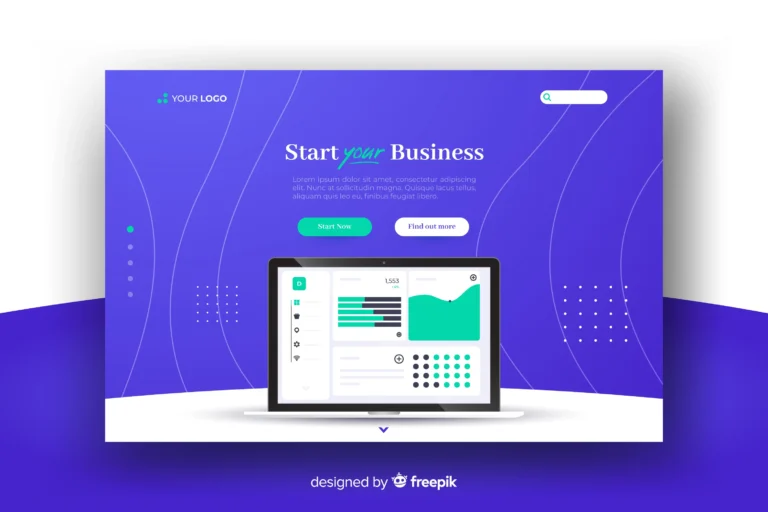10 Easy Tips for making your Mobile Friendly Website

Hello there! Ready to take your website to the next level? With an increasing number of people accessing the internet via smartphones and tablets, having a mobile friendly website is critical for reaching a larger audience and making a good impression. A mobile-friendly website is a must-have in today’s digital age, whether you’re a business aiming to maximize conversions or an individual eager to share your thoughts and ideas with the world. We’ll provide some basic and straightforward strategies in this tutorial to help you make your website mobile-friendly so you can interact with more people and make a greater impact online. So, let’s get started and learn how to make your website sparkle on every device!
What are the Tips for making your Mobile Friendly Website?
- Use a responsive design
- A responsive design that dynamically adapts the layout of your website to match any device’s screen.
- Keep the layout simple
- Avoid intricate layouts or having too many columns, which can make navigating difficult on smaller displays.
- Optimize images
- Image file sizes should be reduced to make your sites load faster on mobile devices.
- Use a larger font size
- Make your site’s text easier to read by utilizing a higher font size.
- Make buttons and links easy to tap
- Use bigger buttons and distance links apart so they are easier to tap on a small screen.
- Use touch-friendly design
- Make sure your site is designed for touch input, such as bigger clickable spaces for buttons.
- Speed up page loading time
- Optimize page loading speed to eliminate latency concerns and to help mobile visitors’ pages load faster.
- Use a mobile-first approach
- To improve the mobile experience, prioritize mobile design above desktop design.
- Optimize your forms
- Use bigger fields and fewer form fields to make forms easier to fill out on a tiny screen.
- Use mobile-specific features
- Use mobile-specific features such as geolocation and push notifications to improve your website’s mobile experience.
Best practices for designing a mobile-friendly website

By 2025, approximately 3.7 billion people will be using smartphones to access the internet as predicted by Stats. These figures unequivocally demonstrate how crucial it is in the modern world to have a mobile-friendly website and application. Therefore, it’s time to build your website or application to be mobile-friendly if you already have one (and if it isn’t already) to make your business stand out.
We’ve chosen the best 10 mobile-friendly design suggestions in this article, along with information on the advantages they offer your company.
Let’s start now to discover tips to make your website mobile friendly
Every mobile device has a different screen size and resolution, thus it’s crucial to make your website and application responsive to mobile devices. As a result, your website and application need to be flexible and adaptable to all screen sizes. You can use the mobile-first design ideology and make your website and application mobile responsive by using the mobile-friendly design tips that are provided:
1. Make sure it’s mobile-responsive.
You must concentrate on creating a website and application with a mobile-responsive design in the initial step. For your website, you can pick a theme or design that is mobile-friendly. Therefore, conduct thorough research to choose the most pertinent and mobile-friendly template or theme for your website. For your websites, numerous well-known website-building platforms, like WordPress, Squarespace, Wix, ThemeForest, and many others, provide stunning and mobile-friendly layouts.
2. Speed-Building Development
The most important aspect of a website is speed. Statistics show that if a website takes longer than 3 seconds to load, 47% of visitors leave. Therefore, speed up your website and application to beat the competition.
- Speed is the desired ranking factor for websites, and those that take longer than 5–6 seconds to load will not be ranked.
- You must make your picture and CSS files as light as possible in order to maximize the speed at which your website loads. As a result, loading is quick and simple.
- Try to maintain the UI of an application clean and basic to boost its speed. This will assist users in using the application smoothly and allow it to load more quickly.
3. Discover Calls to Action (CTAs)

The term “call to action” (CTA) refers to instructions or requests that you make of website or application visitors. Put the appropriate CTAs in the appropriate places on your website and application so that as people read the content you provide, you are strategically directing them with actions to accomplish desired results. However, avoid confusing visitors by overburdening them with CTAs.
4. Simple Interface for Navigation
Create simple navigation on your website as one of the top mobile-friendly website tips. When a user first arrives at your website, they should be able to quickly understand its layout and complete the needed actions without any difficulty. If a visitor arrives at your website with the intention of purchasing a certain product, do not overburden them with offers for newsletter subscriptions, bargains, and product recommendations. Then all you have to do is offer the easiest possible purchasing process. so that customers can choose the item and buy it in a matter of seconds without having to look elsewhere.
5. Utilize other APIs

You don’t have to develop every feature yourself in order to create a mobile-friendly and responsive application or website. Without having to build it yourself, you may use the strength of third-party integration to add new features to your website and application. It is simple and hassle-free to incorporate third-party services like chatbots, payment gateways, file sharing, product listings, etc. Make your website and application as lightweight, quick, and responsive as you can by integrating with the greatest tools.
6. Keep it Safe
In addition to having an intuitive user interface, mobile-friendly websites and applications also offer a secure environment where customers can trade safely with recognized payment channels. To make your website and application more dependable and safe, try to incorporate only reputable payment gateways.
7. Reduce the menu.
Making the menu area smaller can improve the functionality of your website and application and make it more mobile-friendly. You can bury the menu items in a single bar rather than having them all shown in front of the display. It facilitates menu arrangement and speeds up the loading of your website and application.
8. Add a search feature

An essential component of e-commerce app testing strategies is creating and optimizing a fully functional Search Option. Studies show that when a search bar is present, about 30% of visitors use it. It helps you improve the user experience because a search bar makes it easier for potential customers to find what they’re looking for. As a result, the conversion rates are increased.
9. Think about the font and size
The size of the fonts and how they look have a big impact on how the website and application look. Keep the typefaces beautiful, compact, and ideally suited to the screen size when optimizing your mobile application and website. Consider the demands of your website and application when selecting the optimum font and size to improve visibility and make your website and application mobile-friendly.
10. Check on Real Device Cloud
It’s time to test your website and application to determine whether the changes you’ve made are worthwhile for users or require more work after you’ve completed all the changes suggested by the mobile-friendly test and tips, including mobile-friendly interface, high-speed optimization, CTAs, and easy navigation interface.
Conclusion
Being ahead of the competition in today’s environment requires having a mobile-friendly website and application. However, if testing isn’t done, the process isn’t complete, and testing infrastructure will help you every step of the way. With this feature, you can now evaluate the functionality of your website and app on actual devices and browsers.







